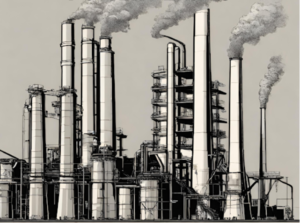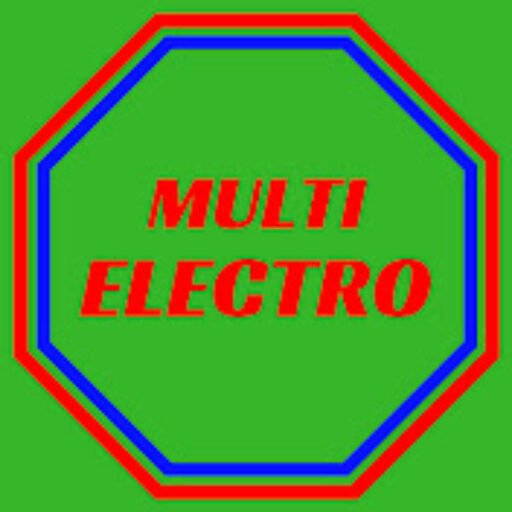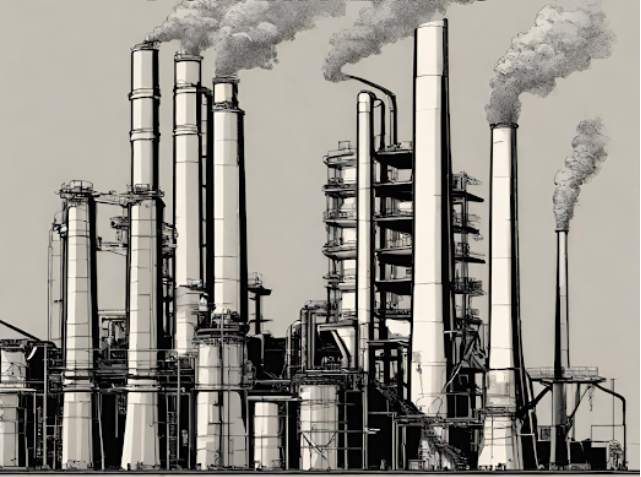
Energy Generation Facilities: The Pulse of Contemporary Society
Deciphering Energy Generation Facilities
Energy generation facilities, colloquially known as power plants, are industrial establishments that produce electricity. They serve as the lifeblood of contemporary society, supplying the energy required for everything from illuminating residences to fueling industries. These facilities utilize a variety of energy sources, encompassing fossil fuels, nuclear power, and renewable resources like wind and solar energy.
In our exhaustive exploration of “Deciphering Energy Generation Facilities,” we delve into the complex mechanisms of these industrial wonders, highlighting their crucial role in energizing our modern world. Power plants, the pulsating core of our global energy infrastructure, are intricate systems that transform various forms of energy into electrical power. They harness energy from a plethora of sources, including fossil fuels like coal, natural gas, and oil, as well as renewable sources such as wind, solar, and hydroelectric power.
The process commences with the extraction of energy from these sources. In the case of fossil fuels, this involves combusting the fuel to generate heat, which subsequently produces steam. This steam propels the blades of a turbine, which is connected to a generator. As the turbine rotates, it drives the generator, transforming mechanical energy into electrical energy. This electricity is then transmitted via power lines to homes, businesses, and industries, illuminating our world and energizing our lives.
Renewable energy sources, conversely, harness the power of nature. Solar power plants, for instance, employ photovoltaic cells to convert sunlight directly into electricity. Wind power plants utilize wind turbines to capture the kinetic energy of the wind, converting it into electrical energy. Hydroelectric power plants exploit the potential energy of falling or fast-moving water to generate electricity.
However, the operation of power plants is not devoid of challenges. The combustion of fossil fuels, for instance, emits greenhouse gases into the atmosphere, contributing to global warming and climate change. Renewable energy sources, while cleaner, are dependent on weather conditions and geographical location, limiting their applicability.
To counter these challenges, power plants employ a variety of strategies. These encompass the use of cleaner, more efficient technologies, the implementation of carbon capture and storage systems, and the diversification of energy sources. Moreover, advancements in energy storage technologies, such as batteries and pumped-storage hydroelectricity, are facilitating the more effective utilization of renewable energy sources.
In conclusion, power plants are complex, dynamic systems that play a pivotal role in our modern world. They are the engines that propel our economies, the lifelines that sustain our societies, and the catalysts that drive our progress. As we advance, it is crucial that we continue to innovate and evolve, harnessing the power of technology and creativity to forge a more sustainable, resilient, and efficient energy future.
The Progression of Power Plants
The history of power plants is a captivating journey. The inaugural power plant, Pearl Street Station, was constructed in 1882 by Thomas Edison. It utilized coal to generate electricity. Since then, power plants have significantly evolved, with technological advancements leading to more efficient and environmentally friendly methods of power generation.
The Transition Towards Renewable Energy
In recent years, there has been a notable transition towards renewable energy sources in power plants. This is due to escalating concerns about climate change and the environmental impact of fossil fuels. Renewable energy power plants, such as wind farms and solar power plants, are becoming increasingly prevalent.
Varieties of Power Plants
There are several varieties of power plants, each with its own merits and demerits. These include thermal power plants, nuclear power plants, hydroelectric power plants, wind power plants, and solar power plants.
Thermal Power Plants
Thermal power plants are the most prevalent type of power plant. They generate electricity by combusting fossil fuels like coal, oil, or natural gas. The heat produced is used to boil water, creating steam that drives a turbine connected to a generator.
Nuclear Power Plants
Nuclear power plants generate electricity through nuclear fission. They use uranium or plutonium as fuel, and the heat produced is used to create steam that drives a turbine.
Hydroelectric Power Plants
Hydroelectric power plants generate electricity by harnessing the power of flowing or falling water. They are a clean and renewable source of energy, but their construction can have significant environmental impacts.
Wind Power Plants
Wind power plants, or wind farms, generate electricity by harnessing the power of the wind. They are a clean and renewable source of energy, but their efficiency can be affected by weather conditions.
Solar Power Plants
Solar power plants generate electricity by harnessing the power of the sun. They use photovoltaic cells to convert sunlight into electricity. Solar power is a clean and renewable source of energy, but its efficiency can be affected by weather conditions and geographical location.
The Future of Power Plants
The future of power plants lies in renewable energy and technological advancements. With the increasing demand for clean and sustainable energy, power plants will continue to evolve and adapt. Innovations in technology will also play a crucial role in improving the efficiency and environmental impact of power plants.
Conclusion
Power plants are an integral part of modern society, providing the energy needed for our daily lives. As technology advances and the demand for clean and sustainable energy grows, power plants will continue to evolve. The future of power plants lies in renewable energy and technological innovation, promising a cleaner and more sustainable future.
FAQs
What is a power plant?
A power plant is an industrial establishment that generates electricity. It can use various energy sources, including fossil fuels, nuclear energy, and renewable resources.
What are the different types of power plants?
There are several types of power plants, including thermal power plants, nuclear power plants, hydroelectric power plants, wind power plants, and solar power plants.
What is the most common type of power plant?
The most common type of power plant is the thermal power plant, which generates electricity by combusting fossil fuels.
What is the future of power plants?
The future of power plants lies in renewable energy and technological advancements. There is a growing demand for clean and sustainable energy, and power plants are evolving to meet this demand.
What are the environmental impacts of power plants?
The environmental impact of power plants depends on the type of power plant and the energy source used. Fossil fuel power plants can contribute to air pollution and climate change, while the construction of hydroelectric power plants can have significant environmental impacts. Renewable energy power plants, such as wind and solar power plants, have a lower environmental impact.


[…] The heart of a generator is its engine, which is responsible for producing the mechanical energy. The size and power of the engine determine the output of the generator. Larger engines produce more power, making them ideal for industrial use, while smaller engines are perfect for residential use. The engine is connected to an alternator, which converts the mechanical energy into electrical energy. […]